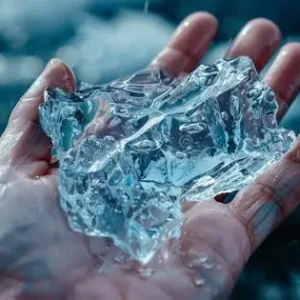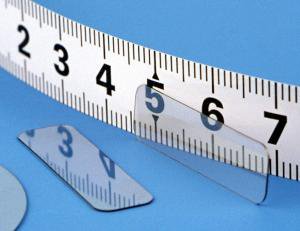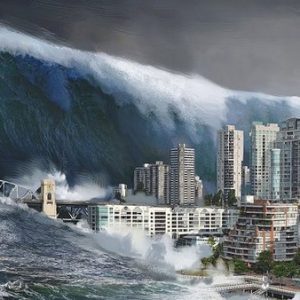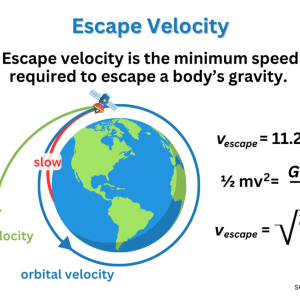You’d be torn apart.
A black hole the size of even the smallest atom (around 0.03 nanometre radius) would have a mass of 2×10162×1016 kg. At a distance of, say, 3 metres, it would produce an acceleration of much more than 100,000 newtons per kilogram, or 10,000 times Earth’s surface gravity. You’d be obliterated instantly. Even the tidal force between opposite sides of your body would be enough to shred you cell by cell.
This short little answer generated so many further questions in the comments that I felt I needed to elaborate. There’s some incredulity about the mass and gravity of such a small object and whether it quickly evaporates. But mostly just a lot of thoughtful questions that led to the following answers.
What is a black hole anyway?
There’s a surprisingly popular misconception that a black hole is a dimensionless “singularity”. Not so. It’s defined as a region of spacetime where gravity is so intense that nothing including light can escape. The boundary of this volume is the event horizon, or what we might call the surface of the black hole. It’s not a physical surface. Think of it like the V1 point on an airport runway where you have to keep going no matter what. There’s nothing physically there.
So where is there a physical “something”? Another amazingly common misconception is that lurking somewhere inside the event horizon is an actual super-dense ball of stuff. There’s a storm of objections in the comments about using the event horizon radius for density calculations instead of this inner nugget. But there is no such thing. At least according to classical physics, the singularity is a dimensionless point of infinite density ( — quantum physics might eventually disagree). The black hole density is the density of the volume bounded by the event horizon. There is no other answer.
How can it be this massive? Black holes aren’t this dense!
Small black holes are much more dense than large ones. A supermassive black hole of ~100 million solar masses is less dense than water! The largest known, at the heart of quasar TON 618, is 300 times less dense than air!
Interestingly, a black hole with the mass of all the “ordinary” matter in the universe would be about the size and density of the observable universe, i.e. around 5 protons mass per cubic metre — the density of the vacuum of space. We could be living inside a black hole.
Don’t be stupid — a black hole can’t be less dense than air!
This has become the most common objection in the comments. Almost invariably it’s because the commenter simply doesn’t accept the definition of a black hole as being the volume bounded by the event horizon. If that’s you, I can’t really help you. If you’re skeptical but just need a little arithmetic to convince you, read on.
An astute commenter brought up the example of a white dwarf and a neutron star which can have approximately the same mass. Isn’t it the neutron star’s much higher density that makes it such a gravitational maelstrom?
Let’s get specific and consider density, surface gravity (i.e. gravitational acceleration at the surface) and escape velocity. These three things all scale with different inverse powers of radius — r3r3,r2r2, and √rr, respectively.
A white dwarf has 700 times the radius of a neutron star. Using the above scalings means the neutron star is more than a third of a billion times denser, but has less than half a million times more surface gravity, and a mere 26 times higher escape velocity. The point here is that the density scales much, much faster than the escape velocity.
A black hole’s definition is not based on the radius of any object, but on where in space the escape velocity exceeds the speed of light (i.e. the event horizon). The region of space within which this condition is met is the volume that we use for calculating the black hole’s density. So we have:
ve=c, ve∝√Mrve=c, ve∝Mr
The mass of a sphere of density ρρ is proportional to ρr3ρr3. If we assume a constant density, then the mass of the sphere just increases with the cube of its radius, so we have:
ve∝√Mr∝√r3r∝rve∝Mr∝r3r∝r
Basically what this is saying is you can start with any density at all, no matter how low, and just increase the radius by adding mass at the same density. Eventually you will get a black hole. For a very low density you will need a very large black hole, but you will get there eventually.
That’s why you can have small black holes with inconceivably high densities, massive ones with the density of water, supermassive ones much less dense than air, and — in principle — inconceivably large ones with the density of interstellar space.
It’s weird that a tiny black hole has more gravity than a bigger one!
I’m not sure that’s the way to put it. It has a higher gravitational acceleration at its surface. All gravitating bodies have surface gravity proportional to radius times density. Since the black hole density is proportional to inverse radius squared, surface gravity is proportional to inverse radius, i.e. bigger for smaller black holes. Small black holes also have a higher gradient of the acceleration, and thus greater tidal force. You could fall through the event horizon of a supermassive black hole without noticing it, whereas you’d be instantly spaghettified by a tiny one.
If big black holes have less gravity, how can they hold down light?
A black hole, by definition, has escape velocity equal to the speed of light at the event horizon. The escape velocity is related to the gravitational potential whereas the gravitational acceleration (discussed in the previous paragraph) is the gradient or slope of the potential, i.e. how rapidly it is changing. All black hole event horizons are at the same gravitational potential energy (equally deep in their “gravity well”), but you can think of a large black hole as filling up more of the well, to where its slope is less steep.

Black holes the size of atoms can’t exist!
There’s nothing in the physics that says they can’t. Since black holes evaporate, all black holes will eventually reach that size, though in the very far future. There’s speculation that density fluctuations in the early universe could have produced tiny primordial black holes. In any case, I’m just answering the question that was posed about atom-sized black holes, which certainly can exist.
Such a tiny black hole would evaporate instantly with the force of a nuclear bomb!
Not so. Black holes do evaporate, but on very long time scales proportional to the cube of their mass. The evaporation time for our atom-sized black hole is 20 trillion trillion years which is a lot longer than “instantly”.
The black hole would be searingly hot. Everything in the vicinity would be incinerated!
It’s true that it would be hot — a thousand times hotter than the surface of the Sun at around six million degrees. But remember it’s only the size of an atom. The total power output is a measly one watt. You’d have to get within one centimeter of the black hole before the radiant flux would equal a sunny day on Earth. Admittedly it would be mostly X-radiation, though ten times “softer” (longer wavelength) than a medical X-ray. In any event, it would not get a chance to burn you before you got spaghettified.
But there’d be a hot accretion disk, right?
Almost certainly. I’ve only concerned myself with the immediate effect on a person, which would be instant obliteration. Your freefall time into the black hole would be five milliseconds. Your back side would take about 25% longer than your front side, so you’d be a stretched-out pink mist by the time you got there. Of course, there’d be a lot of other material trying to get there at the same time as you, which you’re going to run into. ISCO — the innermost stable circular orbit — marks the inner edge of any possible accretion disk, beyond which matter plunges unstoppably into the black hole. Its position varies depending on properties of the black hole. Depending on ISCO radius, every kilogram of your mass would have been accelerated to kinetic energy equivalent to between 2 and 7 megatons of TNT, or up to 40% of its rest mass energy. For sure, sparks are gonna fly.
Wouldn’t the black hole crash through the floor and eat the planet?
It would certainly crash through the floor and head for the centre of the Earth. After that I’m just guessing. If it wove its way around somewhat en route (due to Coriolis forces etc.) it could make an interesting Swiss cheese impression. It would then oscillate around the centre of the Earth for a while but maybe it would settle down due to dynamical friction.
The thing about this small black hole is that the gradient of the acceleration falls away very quickly with distance. At just 400 metres you are down to the same acceleration as at Earth’s surface. Could it just sit there at the centre with nobody any the wiser? I honestly don’t know. Somebody pointed out in the comments that if the BH carved out a void, the immense pressure at the Earth’s core would just keep collapsing it and continue to feed the black hole. I’m afraid I’ll have to plead ignorance in this area.
EDIT: the answer could be “both”. There’s a suggestion that tiny primordial black holes could lurk undetected in the interiors of small planets with liquid cores, whereas solid object encounters with tiny black holes would give more of the Swiss cheese impression.
Then could a particle collider make a tiny black hole that would eat the planet?
Well, no. Particles colliders make new particles from the energy of their beams, according to Einstein’s famous E=mc2E=mc2 formula. An atom-sized black hole sounds tiny, but if you consider its mass (and the energy equivalent of that mass) it’s equal to the Sun’s total energy output for two months — a stupendously large amount. No conceivable collider has that energy, even ignoring the problem of focusing it in a volume the size of an atom.
If we consider the actual particle beam energy of CERN’s LHC — 14 TeV — it has a mass equivalent of 2.5×10−232.5×10−23 kg. A black hole of that mass has an evaporation time of ~10−8410−84 seconds. To even get to an evaporation time of one millisecond you’d have to increase the LHC beam energy by a factor of a thousand trillion trillion.
But maybe you only have to create a black hole big enough to accrete matter on a shorter timescale than its evaporation time? That is still way out of reach of particle accelerators, and you can read an entertaining article on that subject here.
Would your neighbour see your spaghettification frozen in time due to time dilation?
Interestingly, no, not in this case. By “neighbour” we mean an observer far from the black hole, otherwise they’d be getting spaghettified themselves! If you were three metres from a solar mass black hole, a distant observer would see your time slowed down to 3% of their own coordinate time. But, because you are so many Schwarzschild radii from this tiny black hole, the time dilation factor is utterly negligible (a factor of one, correct to eleven decimal places).
If someone gave you $1 on the first day, and doubled the amount each day, how long would it take for the pile of dollar bills to become a black hole?
Nobody asked a question like that, surely? Well, ok, someone mentioned it elsewhere on Quora. And you can find the calculation in my comment on Colin Riegels’s answer to If you had $1, and every day it doubled, what would you do, day by day? (Spoiler: it’s four and a half months).
The newton is a common noun, so it’s “newtons”, not “Newtons”.
Ok, you got me. Corrected.
Show me the numbers!
See below.
Set the black hole radius, rsrs, equal to that of the smallest atom, a hydrogen atom at 0.03 nm. Assume you are standing a distance R=3R=3 metres away, and you are ΔR=0.5ΔR=0.5 metres wide. (Cue the old joke about the physicist starting a lecture with: “imagine a spherical rabbit”). We rearrange the Schwarzschild radius to get the BH mass:
rs=2GMc2⟹M=rsc22G=2×1016kgrs=2GMc2⟹M=rsc22G=2×1016kg
Acceleration at 3 metres, and tidal acceleration for your width:
a=GMR2=1.5×105ms−2a=GMR2=1.5×105ms−2
at=ΔR2GMR3=105ms−2at=ΔR2GMR3=105ms−2
That is, compared to Earth’s surface gravity gg, the black hole would exert 15,000gg on you, and the tidal “spaghettification” force across your width would be 10,000gg.
Black hole evaporation time, luminous power, and temperature:
τev=5120πG2M3ℏc4≈7×1032s=2×1025yrτev=5120πG2M3ℏc4≈7×1032s=2×1025yr
L=ℏc615360πG2M2≈1WL=ℏc615360πG2M2≈1W
T=ℏc38πGMkB≈6×106KT=ℏc38πGMkB≈6×106K
At this temperature Wien’s displacement law gives radiation in the soft X-ray spectrum:
λpeak=bT=5×10−10mλpeak=bT=5×10−10m
Freefall time and lower bound for kinetic energy per kg, assuming maximum ISCO for a rapidly rotating Kerr black hole (4.5 times the Schwarzschild radius):
tff=π2R3/2√2GM=5×10−3stff=π2R3/22GM=5×10−3s
Ekm=∫4.5rsRGMr2dr=−GM[1R−14.5rs]≈1016Jkg−1Ekm=∫R4.5rsGMr2dr=−GM[1R−14.5rs]≈1016Jkg−1
Time dilation factor for a distant observer:
√1−rsR=1−(5×10−12)






